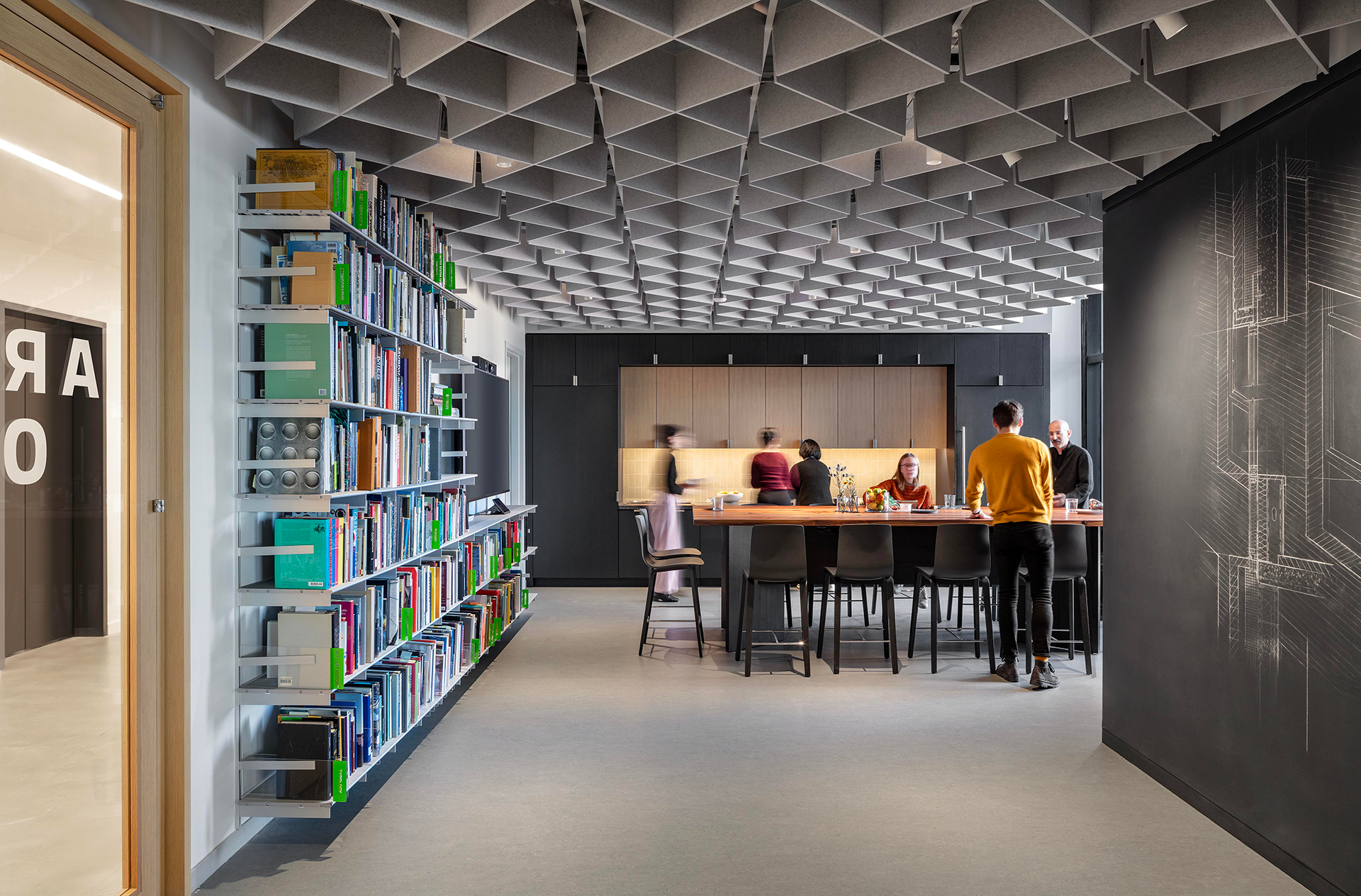
Architecture Research Office in Brooklyn, New York. image / Magda Biernat
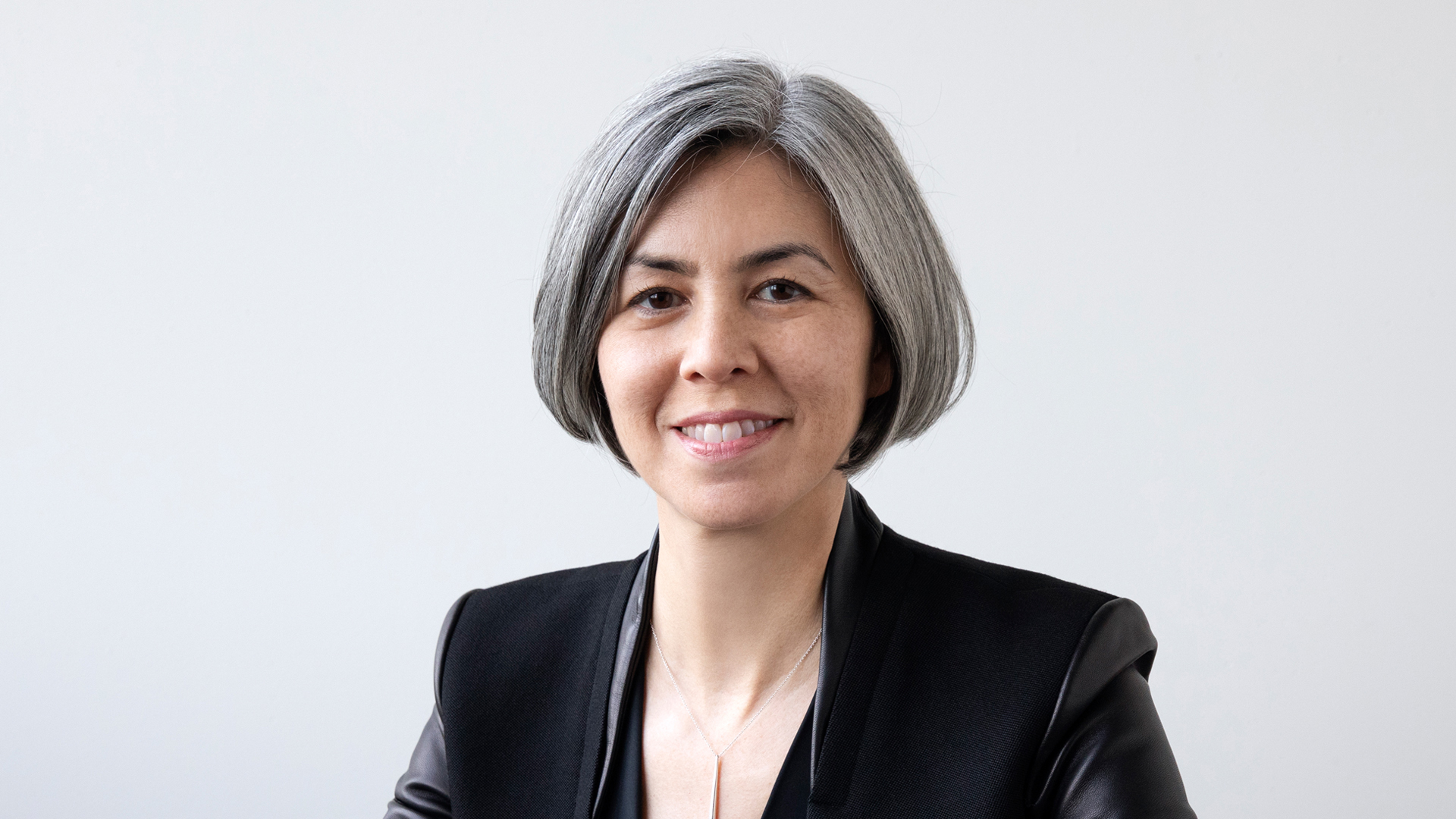
Kim Yao. image / Dean Kaufman
On September 25 at the Gensler Family AAP NYC Center in New York City, Kim Yao will deliver this year's L. Michael Goldsmith Lecture, during which she will offer a tour of Architecture Research Office's diverse body of work and their foundational principles. In advance of this presentation, she shared insights drawn from her experiences in teaching and practice.
Molly Sheridan: How does the architect you are today compare with the expectations you may have had as a student when you considered the path you would follow?
Kim Yao: I actually feel really fortunate in that, in many ways, what I hoped to achieve in terms of type of work and type of practice is very much aligned with where I've landed. When I was a student, I had so many great teachers who were mentors for me. In many of those instances, those mentors became people who then hired me for my first teaching positions and became colleagues and lifelong friends. Who your teachers are when you're in school is very important. I looked to those mentors as examples of the kind of architect I wanted to be. I wanted to stay in New York City and have a smallish-sized practice that was focused on design work and where I could also teach. And that's what I do.
I don't think that's typical, and in some ways, it was not exactly as I had envisioned. There's a big bridge from the abstraction of what you think real life is going to be like to the reality of what it is like. Probably the biggest misalignment is not in terms of the ideals but where I actually spend the majority of my time — how much time and care is spent on the business, on client relationships, on mentoring, and on strategically thinking through how to design the practice itself. The design of the office, we say, is our most important project. And that's true: How do we continue to make how we practice better? So much quality time is spent stewarding the way we work, the processes, and these in-between spaces that are less overtly about the design work but are absolutely critical to enabling it.
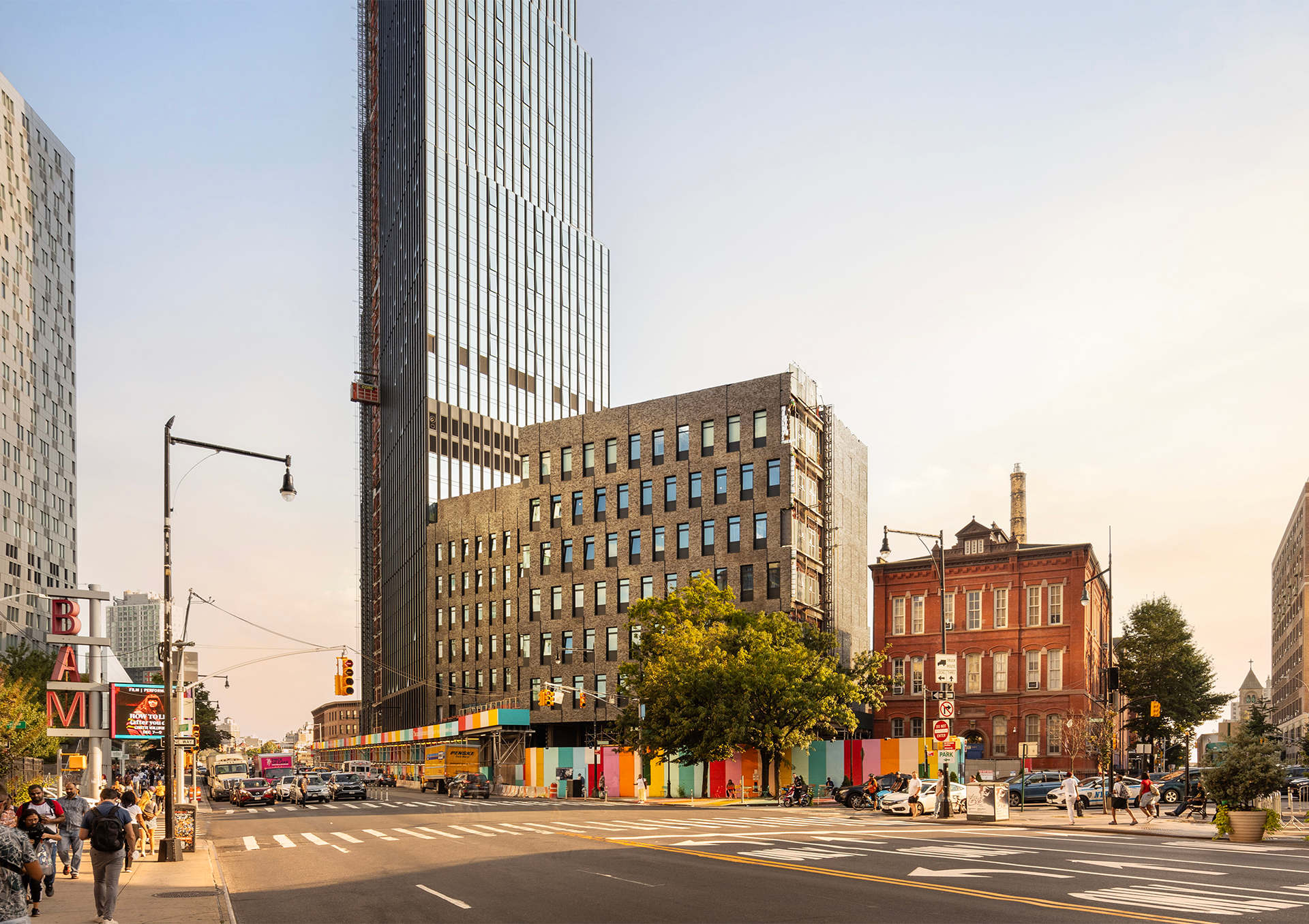
Khalil Gibran International Academy and the Elizabeth Jennings School for Bold Explorers (2024). ARO designed this new Passive House public school building in relation to its tight urban context in Downtown Brooklyn. Collaborators: Alloy Development, Ismael Leyva Architects. image / Pavel Bendov
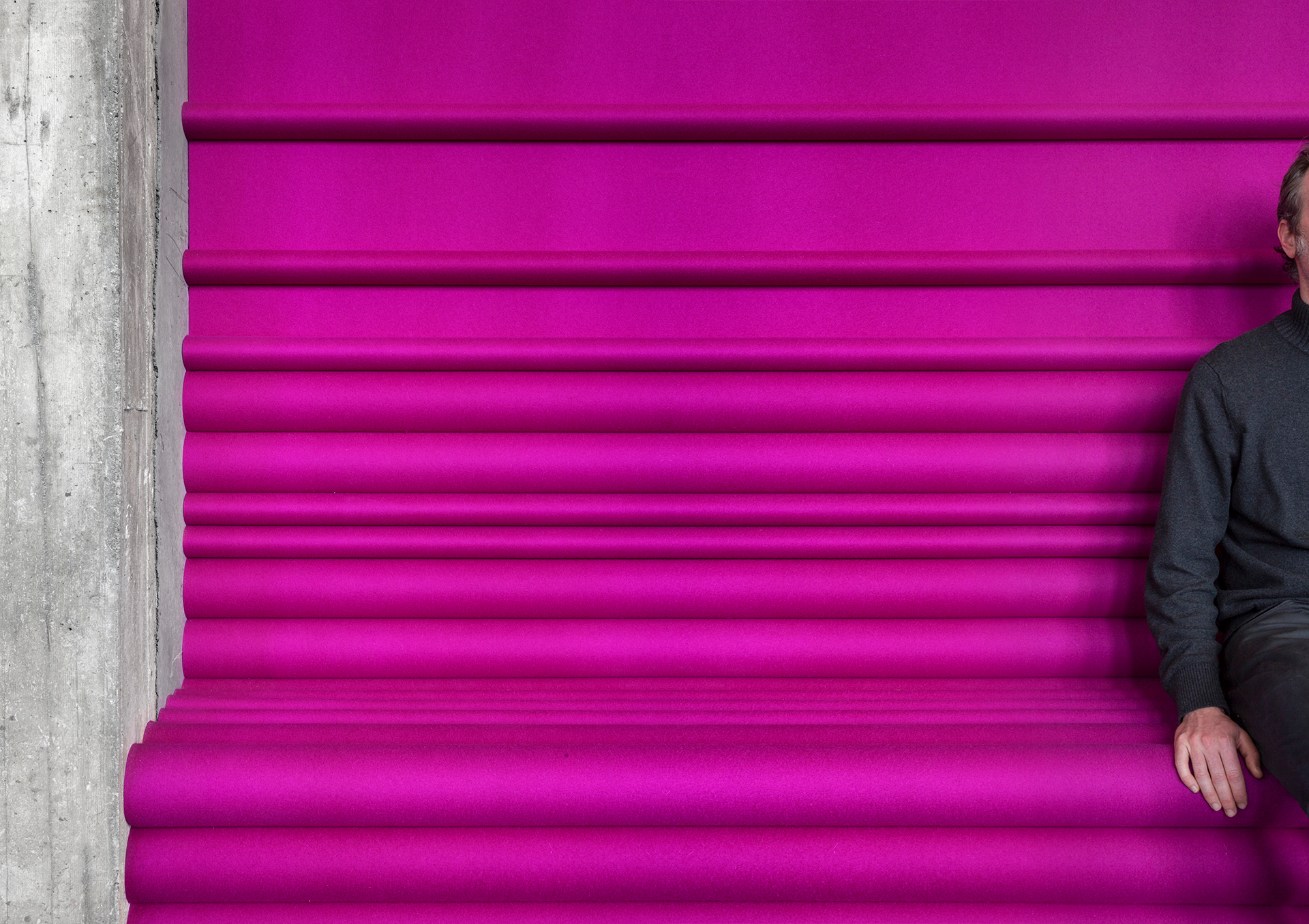
Knoll San Francisco Showroom and Offices (2013). ARO's material explorations for several Knoll showrooms evolved into the ARO Collection, an ongoing line of modular, acoustic, architectural felt products in vivid patterns and colors. image / Richard Barnes (JBSA)
MS: Continuing down that line of thinking, are there other particular questions or philosophies that tend to underpin your work generally?
KY: One of the foundational philosophies in our work has to do with having a collaborative ethos and engaging clients and owners where they are in order to create projects that support their vision and their goals. In some ways it's very simple, but it's very specific and we spend a significant amount of time creating a sense of understanding. Research is embedded in our process in terms of how we learn about a client or a site or a space. It's really important for us to have that knowledge-building phase so that we then can create design work that is absolutely reflective of those conditions. We want our clients to be our thought partners.
We typically speak to elevating everyday materials and how materials are experienced by people in time and space. That level of tectonic exploration is something that is a continuous thread in our work. I don't know if it's a philosophical approach, but it's a very foundational priority.
Lastly, in that process of getting to know the client and outlining the ambition of the project, we like to establish "project principles" that articulate those big aspirations and goals and create a touchstone for us to vet design decisions. Whenever we're trying to make choices, are we really living up to the ambition of the project?
MS: Earlier you mentioned incorporating both practice and teaching into your career path. Can you speak a bit about why it was important to you to pursue both of those roles?
KY: I learn a tremendous amount from my students, and I think I take as much away from our exchanges as they do. The opportunity to share ideas in a creative space and to try to solve problems or challenges or think through design issues is just an incredible privilege.
Demonstrating through different faculty, practitioners, and critics various modes of thinking and approaches to work coming from very diverse perspectives is important. The more that different types of practitioners engage in teaching, the better equipped future designers and architects can be in understanding the range of possibilities that are out there and also the better they are at seeing how they fit into their image of their future. Personally, it was important to me to have work that was getting built. Being able to go from the vision to the reality and learn from that process and combine those skill sets into creating buildings or spaces is incredible. Now it is important for me to be continually practicing in order to inform my approach to teaching. Cross-pollination between the two is really important.
A new campus for the Rothko Chapel in Houston, Texas (Phase II anticipated 2026). The Rothko Chapel's new north campus is organized around a public courtyard, supporting the institution's expanding public programming and call to social action. Collaborators: George Sexton Associates, Nelson Byrd Woltz Landscape Architects. image / SYNEOSIS, courtesy Architecture Research Office

V-Soleil (2021). V-Soleil's green glazing and exposed dark brown clay underbody reference the organic inspiration of vines. The versatile modular elements can be installed to accommodate different solar orientations to optimize shading. Collaborators: Boston Valley Terra Cotta, Heintges, TriPyramid Structures. image / Architecture Research Office

Residence in Bucks County, Pennsylvania (2020). Floor-to-ceiling windows frame panoramic views of the surrounding meadows and fields. Collaborator: Michael Boucher Landscape Architecture. image / Stephen Kent Johnson

Brooklyn Bridge Park Boathouse in Brooklyn, New York (2018). The public boathouse is perched as an object at the edge of a landscaped berm with extensive views of the Manhattan skyline. With its economical and expressive metallic grilles, the boathouse serves as a beacon within the park. Collaborator: Michael Van Valkenburgh Associates. image / Kyle Knodell

Olana Frederic Church Center for Art and Landscape in Hudson, New York (anticipated 2024). Frederic Church's vision for Olana united nature and culture. The center's design collaboration between architecture and landscape emulates this holistic spirit. Collaborator: Nelson Byrd Woltz Landscape Architects. image / SYNEOSIS, courtesy Architecture Research Office
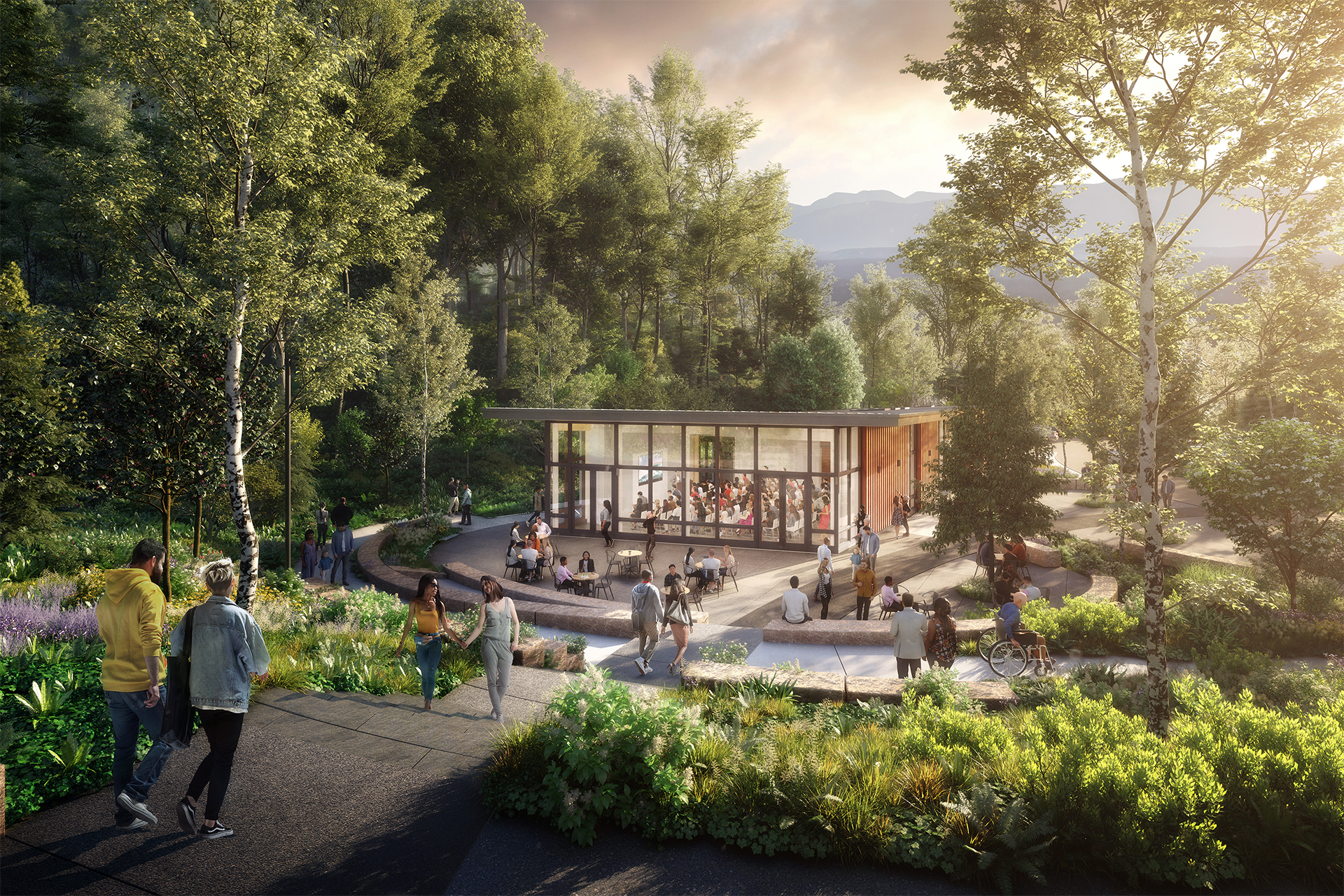
A new campus for the Rothko Chapel in Houston, Texas (Phase II anticipated 2026). The Rothko Chapel's new north campus is organized around a public courtyard, supporting the institution's expanding public programming and call to social action. Collaborators: George Sexton Associates, Nelson Byrd Woltz Landscape Architects. image / SYNEOSIS, courtesy Architecture Research Office
MS: When you look back, is there a learning moment or experience that really resonated or had a great impact during your own days as a student, something that you still carry with you?
KY: Something I was thinking about recently is the context of having your final review or jury. The presentation and critique that we support and how we teach in architectural studios is a highlight when I look back and think about school. Being in front of a room and having to clearly present your work and being able to engage in a dialogue about what's important about it — I think those moments were incredibly formative for me personally. Some were extraordinarily difficult and painful and some were smooth and easy, but they were all rewarding. The fact that we force ourselves as students to be in that dialogue is such great preparation for how we have to work later as architects in the profession. To learn through somebody's line of questions or challenges to your own way of thinking, to reveal more about your own work through how other people perceive it, is a phenomenal opportunity.
MS: You'll be delivering this year's L. Michael Goldsmith Lecture on September 25 in New York City. Could you speak just a bit about the scope of the talk you're planning? What do you hope guests take away from the evening's conversation?
KY: Our firm published a book that will be released this fall, Architecture. Research. Office. It was a really arduous process and what we decided to do is outline the foundational values that we think apply to how we approach both the design of the office and then our work. Then we used projects as case studies of those values put into action. The talk will be focused on the principles that we outline in the book, who we are as a practice and what's important to us: a diverse range of work, research opportunities, material exploration, and moments and spaces for strategic thinking.

Architecture Research Office in Brooklyn, New York. image / Magda Biernat
MS: Speaking of books, is there a book or an object that you tend to keep close at hand when you're working?
KY: I'm a big pencil person; I like my Blackwings. I like erasers. Now a lot of it is stylus, right, and I'm not a massive hand sketcher by any stretch. I don't collect mementos or tchotchkes. I don't need a wall of history behind me in order to work. Libraries are important, however. We have a good library in the office and a good library at home. I do like to use books as a means to explore historical and current precedents when I'm brainstorming. When I'm talking about the library, those are mostly architecture books, but I also think it's wonderful to find those inspirations in other places, so looking at textiles or fabrics or other design disciplines where we think about pattern and color and shadow is really helpful.
What's so great about having those resources at your fingertips is just being able to take a break and flip through something tactile and remember, because like many architects and visual thinkers, being able to go and look at visual content and then think of ways to interpret it and apply it is always really fun.
2024 L. Michael Goldsmith Lecture featuring Kim Yao
Wednesday, September 25 at 6:30 p.m.
Gensler Family AAP NYC Center
26 Broadway, 20th Floor
The L. Michael Goldsmith Lecture is held annually in New York City and was established in 2009 in memory of architect Michael Goldsmith (B.Arch. '72) by his family and friends in recognition of his passion for his education at Cornell, his career, and his love of the profession of architecture. The lecture series features practicing architects who focus on creating work with immediate and tangible effects on the built environment.